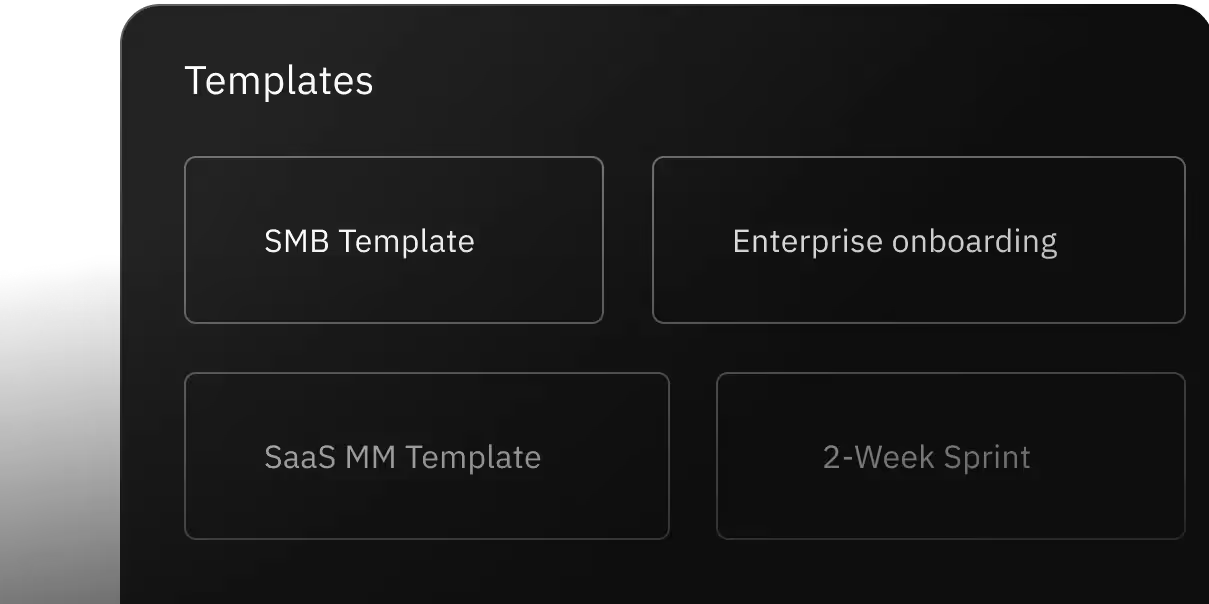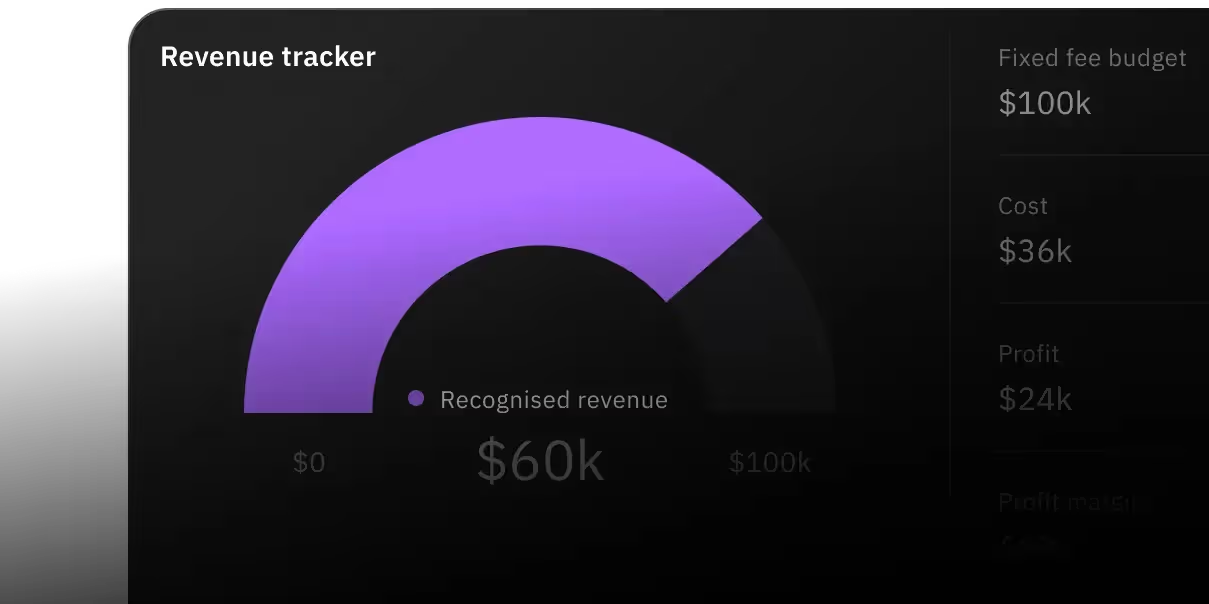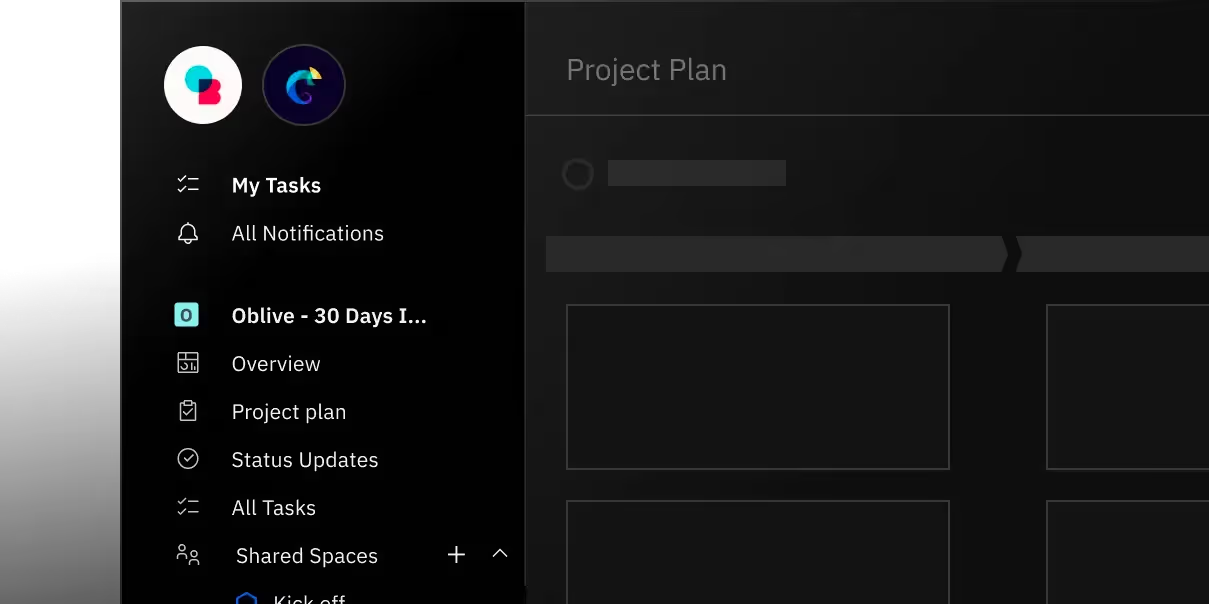Retainers bring harmony to projects for agencies and clients alike — if done right.
If not, agencies can face major challenges when delivering projects, such as scheduling conflicts, losing track of billing, and work getting scattered across several platforms.
Fortunately, you can dramatically improve retainer management with professional services automation (PSA) software. This technology helps service providers handle time tracking, project management, invoicing, billing, and more.
In this article, we’ll show you what retainers are and provide examples of how professional organizations typically use them.
What is a retainer?
A retainer is a recurring payment agreement between an agency and its client. The agency performs services for its client during an agreed time period (called the retainer period) in return for an ongoing payment (called the retainer fee).
While this payment helps to secure a service provider’s commitment, it doesn’t tend to include all fees for the whole process.
The benefits of retainers include:
1. Stable cash flow
2. Long-term relationships with clients
3. Predictable work
4. Predictable value for clients
Any type of agency can enter into retainers, but these service providers usually specialize in fields that require a high level of expertise and possibly even a professional license. For example, law firms, engineering, marketing, finance, project management, graphic design, IT, or recruiting agencies.
Essentially, they sell their time, knowledge, and assistance rather than products.
And just as there are multiple fields of professional services, retainers come in many different forms. There can be numerous additional provisions, roles, and responsibilities, depending on the type of agreement.
Let’s delve into retainer agreements that are most popular with service providers.
Common types of retainers and the professional services that use them
If you’re wondering which agreement best suits your agency, consider the six main types of retainer contracts:
1. Pay-for-work retainer
With this arrangement, the client agrees to pay a specific monthly rate for an agency’s services. Usually, the retainer fee and scope of work are agreed upon upfront, and clients pay a deposit before the work starts.
This type of agreement serves agencies well if you prefer to work on a short-term basis and are still developing relationships with your clients.
With a pay-for-work retainer, you’ll have a reliable stream of income for the hours of work you provide. If your employees work more than the agreed hours, you can charge the client additional fees accordingly. Alternatively, you can deduct hours from the following month, offering more flexibility for your clients.
Pay-for-work retainers are not the same as contracts. Contracts are typically one-time agreements, while retainers involve providing ongoing assistance to the client for a specific period.
Pay-for-work retainers have become increasingly popular among agencies as a way to ensure steady income while providing quality services to clients. Numerous types of agencies find this model to be highly beneficial. Creative and marketing agencies often embrace pay-for-work retainers as they provide a stable income stream while allowing them to focus on delivering high-quality work.
How marketing agencies use pay-for-work retainers
Marketing agencies often opt for pay-for-work retainers because the nature of their work can vary greatly. Some clients might require continuous support for a longer period of time to understand their target audience and create optimized content, while others may only need regular social media updates for a shorter period.
2. Pay-for-access retainer
These retainers are more permanent commitments where you make your specialized knowledge available to clients whenever needed. In other words, they’re paying for your skill and expertise instead of for hours worked.
If your agency has strong, well-established client relationships, this agreement might be ideal for you. Because the client trusts you to provide excellent services, they’ll want to retain those services. As such, pay-for-access provides agencies with a more long-term, predictable revenue stream.
When it comes to pay-for-access retainers, it's important to understand the types of advisors who typically offer this service. One category of advisors who commonly use pay-for-access retainers are industry experts and thought leaders. These are individuals who have deep knowledge and specialized expertise in a particular field, such as finance. Additionally, many high-profile professionals, such as lawyers and consultants, also opt for a pay-for-access retainer model.
How financial advisors use pay-for-access retainers
Financial advisors often utilize pay-for-access retainers to provide their clients with comprehensive financial guidance and support. With this payment structure, clients pay a set fee in exchange for ongoing access to their advisor's expertise and services. This approach allows financial advisors to prioritize personalized attention and develop tailored financial plans that address the unique needs and goals of their clients.
3. Project-based retainer
A project-based retainer is shaped around a specific goal, like organizing and launching a new product. Both parties will specify the budget, resources, fees, and scope for the project upfront.
Companies can tackle multiple clients and projects simultaneously because this retainer doesn’t entail continuous support.
However, a lack of ongoing work could also result in a less steady cash flow than a more long-term arrangement.
As these retainers are project-focused, they’re great for agencies or freelancers who prefer case-by-case work rather than ongoing commitments. Instead of billing by the hour or on a per-project basis, freelancers and agencies are now offering their services through a retainer model. By securing a retainer agreement with a client, freelancers and agencies can plan their resources, allocate time slots, and work on multiple projects simultaneously.
Freelancers and agencies benefit from a steady income, while clients benefit from dedicated resources, consistency in quality, and cost savings. It's a mutually beneficial relationship that fosters creativity, reliability, and innovation.
Additionally, project-based retainers allow freelancers to showcase their skills and expertise in specific areas, attracting clients who require specialized services.
How graphic designers use project-based retainers
Freelancers, such as graphic designers, often opt for project-based retainers as a mutually beneficial arrangement with clients. When the project ends, so does the partnership, and the graphic designer can receive their payment.
By offering their services on a project-by-project basis, they can ensure the client receives high-quality work without the commitment of a long-term contract. For example, assisting a company that wants to rebrand with web design and creating assets. This flexibility works well for both parties, as the freelancer can take on multiple projects simultaneously, maximizing their earning potential.
4. Time-based retainer
Under this agreement, you bill clients monthly based on the number of work hours your agency performs.
And although you charge the client on an hourly basis, unlike pay-for-work retainers, the project scope is typically open-ended. The flexible nature of this arrangement gives you more leeway with your clientele.
However, this retainer contract can lead to costly additional fees for the client, especially if your agency often works extra hours.
Freelancers and consultants often rely on time-based retainers to provide their expertise to multiple clients. Small businesses may opt for this type of retainer to access specialized services on an as-needed basis. Time-based retainers are commonly used in the legal industry, where billing is largely based on the amount of time spent on a particular case or project. (billable work)
While fixing billable work hours may work for attorneys, businesses can't put a definitive bar on the hours and hence rely on something called billable utilization. This will help them assess resource utilization and project profitability throughout the project.
To optimize billable utilization while ensuring client satisfaction, Rocketlane is the right place to start.
How attorneys use time-based retainers
Attorneys often use time-based retainers to provide their clients with a predictable structure for legal fees. This arrangement is especially beneficial in complex and lengthy cases, where the scope of work may vary over time.
Attorneys often have to handle multiple clients in their line of work. As such, having more flexibility is crucial.
When a client hires an attorney to represent them in court or prepare legal documents, a time-based retainer allows the attorney to establish the number of hours upfront and receive a stable income while managing numerous clients.
By establishing a time-based retainer, attorneys can ensure that they are adequately compensated for the hours they dedicate to their client's legal matters. This approach not only benefits attorneys but also offers transparency and clarity for clients, enabling them to have a clear understanding of the cost implications associated with their legal representation.
Want to make your business operations more time-efficient?
You can do so with Rocketlane’s timesheets and see how long your team spends on certain tasks and projects.
5. Lump sum retainer
A lump sum retainer is a pay-as-you-go agreement. Instead of billing clients at an hourly rate for an undefined retainer period, the client must pay a lump sum in advance for a predetermined number of work hours.
With a lump sum retainer, clients and service providers can establish clear expectations and priorities from the beginning, ensuring a smooth workflow. This arrangement eliminates the need for constant negotiation of rates and allows both parties to focus on achieving project goals instead. By investing upfront, clients also demonstrate their commitment to the project, motivating all stakeholders to work collaboratively and efficiently.
A common approach for agencies is to use lump sum retainers as a way to secure a certain number of hours or a fixed amount of work from their clients each month. Creative agencies often use lump-sum retainers to provide better services to their clients. Another way agencies use lump sum retainers is to offer a discounted rate or additional services as an incentive for clients to commit to a longer-term contract.
How creative agencies use lump sum retainers:
A creative agency that has to juggle several clients might opt for the relative simplicity of a lump sum retainer.
This agreement eliminates much of the busy work often involved in retainer management, so the agency can work on web design, infographics, and logos without worrying about unpredictable cash flows.
But this arrangement can lead to much ambiguity over the work and what’s being paid for. As the retainer fee is a one-time payment, your agency risks working overtime without fair compensation if there are any unexpected changes to a project’s requirements (scope creep).
Additionally, a lump-sum retainer isn’t effective if clients have to hop between several platforms to keep track of important work.
Want to eliminate the busy work of retainer management without the downsides of a lump-sum retainer?
Automate the retainer process with a PSA tool like Rocketlane — an all-in-one workspace that lets you effortlessly organize essential documents and resources.
6. Recurring retainer
Recurring retainers are when clients pay fees on a monthly or quarterly basis for certain services.
Although many retainers set up recurring agreements, this isn’t a requirement. Recurring retainers, however, always entail ongoing arrangements rather than short-term work (i.e., project-based retainers).
The benefit of this agreement is twofold:
Clients can continually depend on your excellent services to resolve their needs while your agency receives a reliable income stream.
Many firms across various industries utilize recurring retainers as a strategic business practice. Law firms often use recurring retainers to provide ongoing legal advice and services to their clients, ensuring a consistent and reliable legal support system. IT firms are increasingly turning to recurring retainers to better serve their clients and maintain strong business relationships. Additionally, consulting firms leverage recurring retainers to provide ongoing professional guidance and support to their clients.
How IT firms use recurring retainers:
Recurring retainers work well for IT firms that provide monthly maintenance and assistance with a client’s software needs. With recurring retainers, IT firms can prioritize their client's needs, provide timely support, and stay ahead of the ever-evolving technology landscape. It's a win-win situation for both the firm and its clients.
Although IT companies can perform one-off services, they often perform regular tasks on an ongoing basis (i.e., testing software, fixing bugs, and providing IT support.)
When managed correctly, retainers ensure fair compensation for your work, provide ongoing value to your clients, and build long-lasting partnerships.
In professional services project management, employing inadequate tools may result in disorganization, document loss, and a subpar client experience.
This complexity not only complicates fee calculations but also poses risks to projects and client relationships. Streamline your project management with PSA solutions like Rocketlane.
PSA software automates and integrates finance, resource, and project management, saving time and money. Unified processes empower teams to drive growth without relying on manual entries and disjointed systems.
How?
Let’s dive in.
Optimizing retainer management with Rocketlane
Managing retainers can feel complex. This is where a PSA platform like Rocketlane becomes essential; it consolidates all retainer processes.
Rocketlane enhances visibility into your retainer projects, ensuring exceptional project transparency that involves your clients throughout the journey.
With Rocketlane’s unparalleled PSA capabilities, you can automate project management, organize your resources, and track time.Rocketlane’s resource management features allow you to manage and stay on top of multiple client projects with ease. You can gain insight into all available resources, assign roles, forecast bottlenecks, and guarantee commitment to project timelines.
Time tracking, in particular, is a great feature to leverage for time-based retainers, as you can use timesheets to record how long teams spend on daily tasks. This helps you accurately compute invoices and bills, provide clients with transparent reports, and increase your team’s efficiency.
And that’s not all Rocketlane delivers. Rocketlane's Trifecta of features put the automation in professional services automation:
1. Projects and Process

Run projects seamlessly with Rocketlane—effortlessly build, track, and manage tasks, timelines, documents, and forms. Experience a 360° project view, optimizing real-time or asynchronous collaboration.
2. People and Finance

Unify projects, resources, and finances seamlessly with Rocketlane. Attain comprehensive financial insights, stay on budget, and enhance profitability by effortlessly tracking project data for accurate cost analysis and margin optimization.
3. Customer Experience and Accountability

Elevate customer experiences using Rocketlane. Foster customer accountability, team collaboration, and professional value delivery. Provide clients with an exclusive portal for a top-notch experience.
Whether you’ve structured your arrangement around the time, effort, or quality of your services, Rocketlane’s core functions are intelligently designed to accommodate any retainer agreement.
Automate your retainer processes, manage resources, and calculate retainer fees so you can deliver on your promises without breaking a sweat.
Want to try?
Sign up for a free trial of Rocketlane and stay on top of retainer management today!


.avif)
















